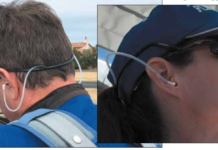After talking with brake manufacturers and maintenance technicians about their experiences with aircraft brakes over a combined total of more than 100 years, we distilled that experience down to a list of simple things pilots and owners can do to get the most out of their brakes while saving money.

Include the brakes on the preflight—even if they’re covered by wheel pants, look at the condition of the visible parts and check for corrosion, cracks and frayed hoses.
Any drip or puddle under a brake is a red flag—don’t fly the airplane until a maintenance technician looks it over. Otherwise you’re begging for a brake failure—and Murphy’s Law as applied to aviation means it will happen at absolutely the worst time.
Use the brakes. It helps fight corrosion, the bane of brakes. Also, the glaze that was built up on the brake pads during initial conditioning is renewed through use. Non-use allows the glaze to degrade, reducing brake effectiveness.
Check brake pad thickness at least as frequently as at each oil change. Replace them when they approach wear limits—it’s much cheaper than fixing the damage that will occur to the disk if you let them wear out.
When taxiing, don’t ride the brakes—stay completely off them unless you need to decelerate.
Pull the throttle to idle before applying the brakes.
When turning or taxiing crosswind, put the rudder to the stop before applying the brake—you may not need the brake.
Before landing, assure your toes are low on the pedals—think, “Heels on the floor.”





